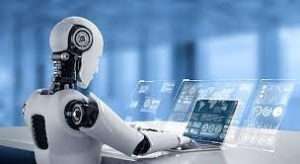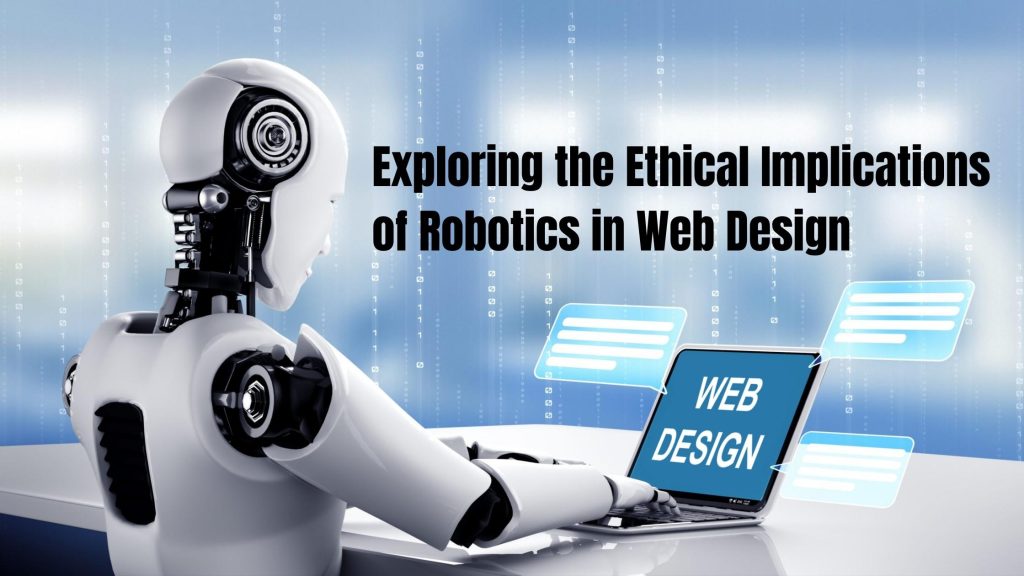Robots are no longer just science fiction characters, they’re real-life entities that have made their way into our daily lives. From manufacturing to healthcare and now web design, robots are revolutionizing industries like never before. With the increasing use of robotics in web design, it’s essential to explore its ethical implications on society. The impact of these machines raises pressing questions about the role of technology in shaping our future and how we can ensure it aligns with our values.
In this blog post, we delve into the ethical considerations surrounding robotics in web design and what it means for businesses and consumers alike. So buckle up and get ready for a thought-provoking journey!
Introduction: What is Robotics and How does it Relate to Web Design?
Robotics is a branch of engineering that deals with the design, construction, operation, and application of robots, as well as computer systems for their control, sensory feedback, and information processing. Robotics is related to web design in that both disciplines deal with the creation and control of machines. However, robotics focuses on the physical aspects of machine design and operation, while web design focuses on the visual and interactivity aspects.
The ethical implications of robotics in web design are largely unexplored territory. As robots become more advanced and more ubiquitous in society, it is important to consider how they will impact our lives and our values. Some ethical concerns that have been raised include:
• The impact of robots on employment: As robots become more efficient and cost-effective, they may replace human workers in a variety of industries. This could lead to mass unemployment and economic upheaval.
• The impact of robots on privacy: Robotic devices are becoming increasingly sophisticated and are capable of gathering large amounts of data about people’s behavior. This raises questions about how this data will be used and who will have access to it.
• The impact of robots on personal relationships: As robots become more lifelike and capable of forming emotional attachments with people, there is a risk that they could replace or compete with human relationships. This could have a negative impact on mental health and social cohesion.

The Benefits of Robotics in Web Design
Robotics can help web designers in many ways. For example, robotic assistants can help with repetitive tasks, such as coding or creating graphics. This can free up designers to focus on more creative aspects of their work. In addition, robotics can help create a more efficient workflow by automating tasks that would otherwise be done manually.
Robotics can also help to improve the user experience of a website. For example, robotic chatbots can provide customer support or answer questions about a product. This can be especially helpful for e-commerce websites that need to provide 24/7 support. Additionally, robotics can be used to create interactive elements on a website, such as games or quizzes. This can make a website more engaging and enjoyable for visitors.
Robotics can help to make websites more accessible. For instance, blind users may not be able to use a traditional computer interface effectively. However, they could use a voice-activated robot to navigate a website and perform various tasks. This would allow them to access the same information and functionality as everyone else.
Robotics can have many benefits for web design. By automating repetitive tasks and improving the user experience, robotics can help designers create better websites overall.
Potential Risks and Ethical Implications of Using Robotics in Web Design
When robots are used in web design, there is the potential for a number of risks and ethical implications. First, there is the risk that the robots will not be able to accurately represent the user’s needs and preferences. This could lead to a loss of control over the web design process, and ultimately, to a poor user experience.
Second, there is the risk that robots will be used to create websites that are biased or discriminatory against certain groups of people. This could have a negative impact on social cohesion and lead to further division within society. There is the risk that robots will be used to create websites that are designed to exploit and manipulate human users. This could have serious implications for our privacy and security, as well as our mental and physical well being.
Intersectionality of Robotics and Human Rights
Robotics technologies are increasingly becoming involved in various aspects of web design, from website development to user experience (UX) design. As these technologies become more embedded in the fabric of web design, it is important to consider the ethical implications of their use.
One key area of concern is the potential for robotics technologies to exacerbate existing inequalities in society. For example, algorithms that are used to personalize web content for individual users can reinforce existing social biases. If a particular algorithm is designed to show users content that is similar to what they have interacted with in the past, this could lead to a form of self-reinforcing discrimination, whereby marginalized groups are less likely to see content that challenges their existing views.
Another key area of concern is the impact of robotics on employment. As more and more tasks are automated through the use of robotics technologies, there is a risk that human workers will be displaced from their jobs. This could have a particularly negative impact on low-skilled workers, who may find it difficult to compete with robots for jobs.
There is also a concern that robotics technologies could be used to violate people’s privacy rights. For example, facial recognition technology has the potential to be used for mass surveillance purposes, without the consent of those who are being monitored. This could have a chilling effect on people’s willingness to express themselves online, and could lead to an increase in self-censorship.
All of these concerns highlight the need for a careful consideration of the ethical implications of robotics technologies on human rights. It is important to ensure that these technologies are not used to reinforce existing social inequalities or to violate people’s fundamental rights.
Advancements in Artificial Intelligence and How it Impacts Web Design
The advancement of artificial intelligence (AI) has been a hot topic in recent years, with major implications for a variety of industries, including web design. While AI can offer significant benefits in terms of efficiency and productivity, there are also ethical concerns that need to be considered.
In terms of web design, AI can be used to automate various tasks, such as website testing and optimization. This can help to improve the user experience by ensuring that websites are functioning properly and providing relevant content. However, there is also the potential for AI to be used in more manipulative ways, such as creating personalized ads or increasing the likelihood of users clicking on certain links.
As AI becomes more advanced, it is important to consider the ethical implications of its use in web design. How will personal data be used? What are the risks of automating certain tasks? These are just some of the questions that need to be addressed in order to ensure that AI is used responsibly in this field.
Looking Ahead to the Future: What Does it Mean for Web Design?
As technology continues to advance, we must consider the implications of these advancements on our society as a whole. One area that is ripe for discussion is the use of robotics in web design. While there are many potential benefits to using robots in web design, such as increased efficiency and accuracy, there are also ethical implications to consider.
When designing websites, we must take into account the user experience. We must think about how our users will interact with our site and what kind of experience we want them to have. With the use of robotics, we have the potential to create a more seamless and efficient user experience. However, we must also consider the ethical implications of using robots in this way.
Are we taking away jobs from human designers?
What are the privacy implications of using robots to collect data?
How will this change the way we interact with technology?
These are just some of the questions we must consider as we look ahead to a future where robotics play a larger role in web design. As technology advances, it is important that we discuss these issues so that we can make informed decisions about how to ethically use these new tools.
Conclusion
Robotics and web design can be a powerful combination, but it is important to consider the ethical implications that this technology raises. As robots become increasingly integrated into web design workflows, it is essential for practitioners to understand the potential consequences of using these technologies in order to ensure fairness and justice when creating digital products.
By considering these ethical ramifications in addition to maximizing productivity gains, robotics can be used responsibly within web design without compromising people’s rights or values.

